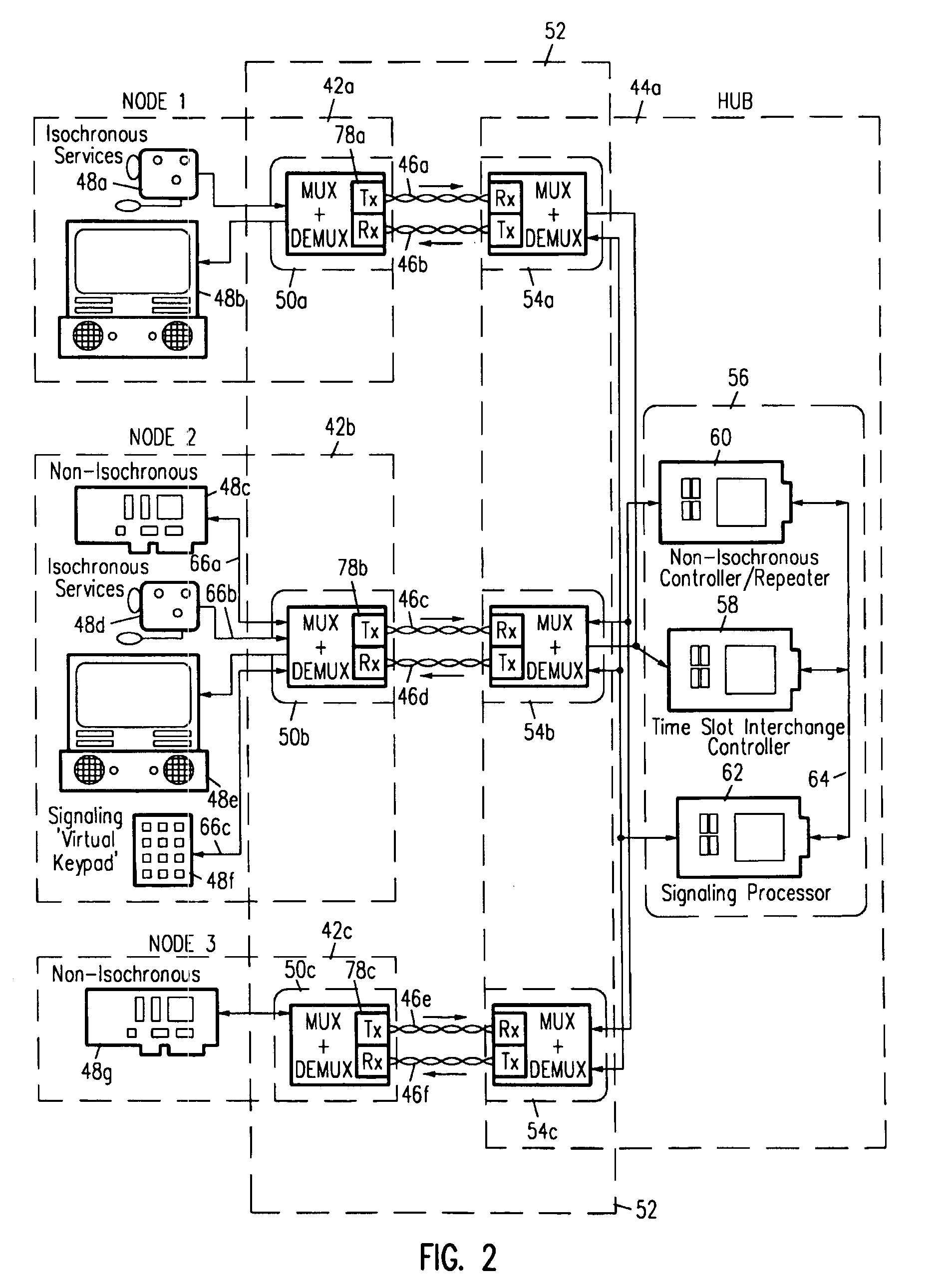Network link endpoint capability detection
a technology of network link and endpoint capability, applied in the field of network link endpoint capability detection, can solve the problems of infeasible or wasteful upgrading only parts of the system, and it is not possible to operate a mixed-protocol or “mixed-environment” system
- Summary
- Abstract
- Description
- Claims
- Application Information
AI Technical Summary
Benefits of technology
Problems solved by technology
Method used
Image
Examples
Embodiment Construction
[0024]Before describing link endpoint capability detection, a general description of one type of network will be provided as one example of a data communication system in which the present invention can operate. A data communication system can be configured in a star-topology with a plurality of nodes 42a, 42b, 42c, (FIG. 2) each coupled to a hub 44a by data links comprising physical data transmission media such as one-way twisted pair wires 46a-46f. The number of nodes can be adjusted depending on the data transmission needs and objectives of the system. In one embodiment, each hub is configured to accommodate connection with up to 16 nodes. Each node 42a, 42b, 42c includes circuitry 50a, 50b, 50c for receiving data, converting it to a form suitable for transmission onto the physical media 46a, 46c, 46e and receipt of signals from the physical media 46b, 46d, 46f and conversion to a form suitable for use by the data sinks. Each of the nodes 42a, 42b, 42c includes data sources and s...
PUM
 Login to View More
Login to View More Abstract
Description
Claims
Application Information
 Login to View More
Login to View More - R&D
- Intellectual Property
- Life Sciences
- Materials
- Tech Scout
- Unparalleled Data Quality
- Higher Quality Content
- 60% Fewer Hallucinations
Browse by: Latest US Patents, China's latest patents, Technical Efficacy Thesaurus, Application Domain, Technology Topic, Popular Technical Reports.
© 2025 PatSnap. All rights reserved.Legal|Privacy policy|Modern Slavery Act Transparency Statement|Sitemap|About US| Contact US: help@patsnap.com



